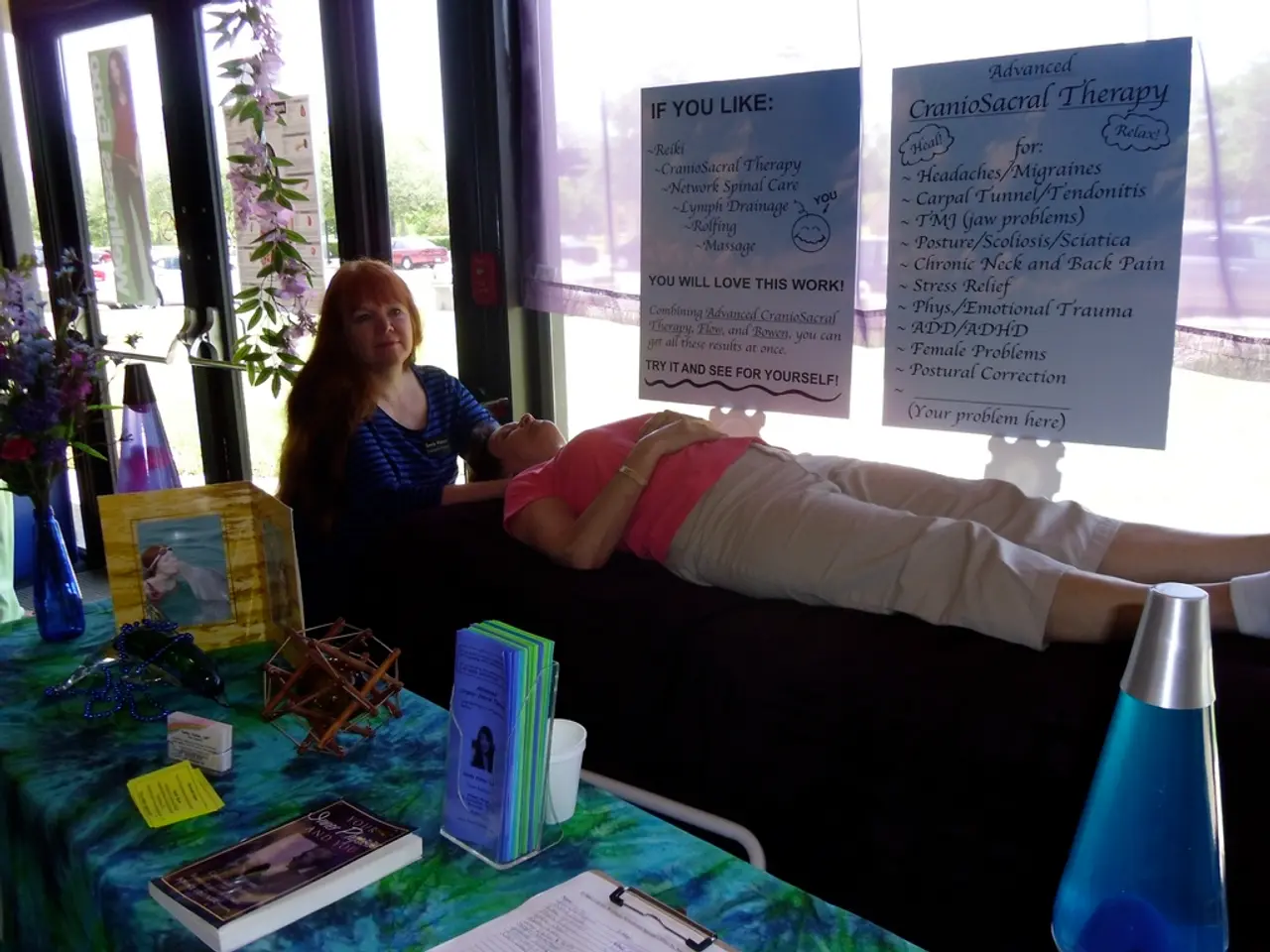Purposeful Strategies for Managing Attention Deficit Hyperactivity Disorder (ADHD) through Cognitive Behavioral Therapy (CBT)
In the quest to manage Attention Deficit Hyperactivity Disorder (ADHD), Cognitive Behavioral Therapy (CBT) has emerged as a powerful tool. This therapy, designed to help individuals with ADHD, anxiety, depression, and other mood disorders, focuses on managing impulsive behaviors and negative thought patterns.
One of the key strategies in CBT is setting one major daily goal and breaking it into manageable steps. This approach reduces overwhelm and increases focus on achievable tasks, making it easier to stay on track.
Another effective method is the use of timers and planned rewards. These tools maintain motivation and reinforce attention during activities, helping individuals stay focused and complete tasks more efficiently.
Practicing mindfulness meditation is another crucial component of CBT. This technique improves attention regulation and helps manage emotional symptoms related to ADHD and anxiety. Being aware of what's happening in the present moment, without judgment, is the essence of mindfulness.
Cognitive restructuring is another essential part of CBT. This process involves identifying and challenging negative or impulsive thought patterns that interfere with task completion and self-management. One exercise for cognitive restructuring is the "Reframing Negative Thoughts Exercise," which involves writing down 10 tasks or accomplishments that the individual feels proud of to counteract negative self-talk.
Repetition is key in CBT exercises for ADHD, as it helps rewire the brain on how it reacts to situations long-term. Journaling can bring awareness to thought patterns and reveal their accuracy.
Reward systems can be useful for motivating children with ADHD to accomplish tasks. For example, adding a sticker to a chart when the task is done can provide a tangible reward that encourages continued effort.
The "Stop. Think. Act." method is an impulse control technique in CBT that encourages individuals to pause, evaluate potential outcomes and consequences, and make informed decisions.
CBT recognizes that thoughts, feelings, and behaviors are connected, and that actions and emotions are responses based on interpretations and perceptions of what is happening. If a thought arises during mindfulness, it can be noticed without entertaining it.
Additional brain-based exercises used alongside CBT to improve focus include cerebellar training through coordination games and neurofeedback, which target attention and impulse control networks in the brain.
Supportive strategies complementing CBT involve establishing a supportive environment (family, coaching, accountability partners), which reinforces behavioral goals and consistency.
Visual schedules or checklists can help children with ADHD stay on track, build self-esteem, establish a routine, and feel a sense of accomplishment.
Minimizing distractions and building in periodical rest breaks can also help individuals with ADHD complete tasks using CBT strategies. Keeping a time tracking log can help bring awareness to distractions and help recognize what requires addressing.
The balloon breathing technique is a creative and effective mindfulness activity that can help children with ADHD slow down thoughts and emotions while bringing awareness to their surroundings.
In summary, integrating CBT exercises that target attention and behavior management—goal setting, cognitive restructuring, mindfulness, and behavior activation—with supportive brain training and environmental strategies fosters better symptom management and leverage of strengths in ADHD. These findings are grounded in recent research and expert clinical recommendations from sources such as TelepsychHealth, ADDitude Magazine, and Creyos. CBT exercises can empower individuals with tools for long-term success in daily tasks or reaching new goals.
- The development of mindfulness meditation in CBT has been found to significantly improve health-and-wellness aspects, particularly attention regulation and management of emotional symptoms related to ADHD and anxiety.
- As part of the CBT approach, incorporating fitness-and-exercise, such as coordination games and neurofeedback, can positively impact brain-based development, targeting attention and impulse control networks.
- Nutrition plays a crucial role in overall health, and maintaining a balanced diet can help support the mental-health benefits derived from CBT, ensuring individuals have the energy needed for successful daily goal achievement and exercise.




